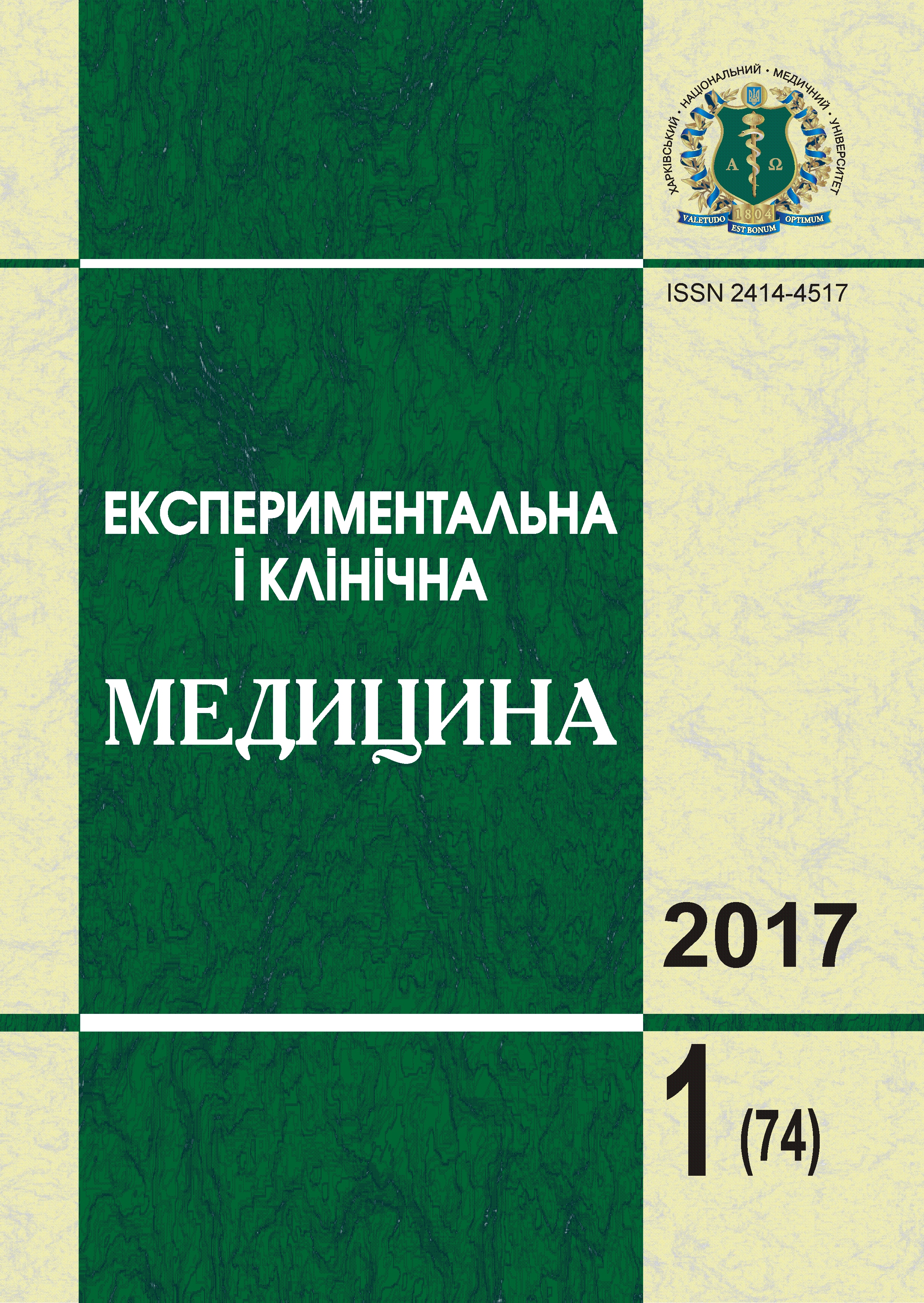Abstract
The study involved 83 pregnant women with autoimmune thyroiditis (AIT), which we divided into groups depending on the degree of dysfunction of the thyroid gland: pregnant women with euthyroid, receiving symptomatic treatment; pregnant women with hypothyroidism who received hormone replacement therapy and in the complex treatment includes folic acid, pregnant women with autoimmune hyperthyroidism treated with natural anticoagulant and thyrostatic therapy. The most common in pregnant women: infertility, miscarriage, spontaneous abortion and the threat of termination of pregnancy, preeclampsia and placental insufficiency. The data obtained during the current pregnancy in women with autoimmune thyroiditis suggests that it is complicated by the risk of premature birth, early and late gestosis, chronic fetal hypoxia, gestational hypertension, placental insufficiency. The main complications during delivery were premature rupture of membranes, weakness and discoordination labor, premature detachment of normally situated placenta. These findings suggest adverse effects of AIT on pregnancy and childbirth, which is manifested significantly greater number of complications gestational process and the weight of the newborn state. Decisive for more labile course of pregnancy and the newborn state on background AIT is a timely and adequate treatment with thyroid preparations, taking into account the severity of disease.References
Щербаков А.Ю. Плацентарная дисфункция на фоне эндокринной патологии / А.Ю. Щербаков, И.А. Тихая, В.Ю. Щербаков // Международный медицинский журнал. – 2012. – № 3. – С. 88–95.
Van den Boogaard E. Significance of (sub)clinical thyroid dysfunction and thyroid autoimmunity before conception and in early pregnancy: a systematic review / E. Van den Boogaard, R. Vissenberg // Human Reproduc Update. – 2011. – Vol. 17 (5). – Р. 605–619.
Репродуктивне здоров’я жінок із патологією щитовидної залози / Ю.П. Вдовиченко, Т.Г. Романенко, А.А. Суханова и др. – К.: Старт-98. – 2013. – 59 с.
Лубяная С.С. Фетоплацентарная недостаточность: метод. рекомендации / С. С. Лубяная, И. В. Чибисова. – Луганск, 2011. – 31 с.
Said J.M. Inherited thrombophilia polymorphisms and pregnancy outcomes in nulliparous women / J.M. Said, J.R. Higgins, E.K. Moses // Obstet and Gynecol. – 2010. – Vol. 115, № 1. – P. 5–13.
Особенности функции щитовидной железы во время беременности: обзор литературы / Л.З. Аликенова, М.Ж. Еспенбетова, К.Ш. Амренова, С.Б. Амангельдинова // Наука и Здравоохранение. – 2015. – № 1. – С. 13–21.
Исмаилов С.И. К вопросу о факторах влияющих на нормальный рост плода в антенатальном периоде / С.И. Исмаилов, Ю.М. Урманова, У.Х. Мавлонов // Міжнародний ендокринол. журнал. – 2011. – № 4. – С. 149–153.
Фадеев В.В. По материалам клинических рекомендаций по диагностике и лечению заболеваний щитовидной железы во время беременности и в послеродовом периоде американской тиреоидной ассоциации / В.В. Фадеев // Клиническая и экспериментальная тиреоидология. – 2012. – № 1. – С. 7–18.
Краснопольский В.И. Динамическое наблюдение за детьми, родившимися у матерей с различной эндокринной патологией / В.И. Краснопольский // Российский вестник акушера-гинеколога. – 2005. – № 1. – С. 74–80.
Кроненберг Г.М. Репродуктивная эндокринология: руководство / Г.М. Кроненберг, Ш. Мелмед, К.С. Полонски, П.Р. Ларсен; пер. с англ. под ред.
И.И. Дедова, Г.А. Мельниченко. – М.: Рид Элсивер, 2011. – 410 с.
